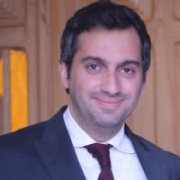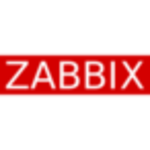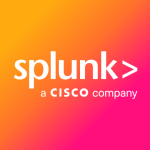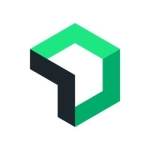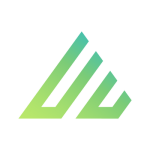What is our primary use case?
We use it for infrastructure monitoring and real user monitoring on our website, i.e., monitoring how users interact with our website and digital experience. We use it to track if our website is up using synthetic monitoring, which we use for our website and mobile app. We use Dynatrace to track complete observability through our infrastructure to our digital apps.
How has it helped my organization?
We are able to share information easier and improve user experience.
When a ticket is logged in Dynatrace, it automatically goes to the correct support team. There is no manual intervention, which saves time. We are saving probably $30,000 to $40,000 annually because we are not employing several people to do this work.
Dynatrace’s ability to help us visualize and understand our infrastructure, and to do triage, is very good. It provides a Smartscape view, which gives us an overall view of the topology. When a problem is raised, it draws out where the issue lies and also suggests the solution. This brings down mean time to restore very quickly, helping the resolution.
The fact that the solution is a unified platform has very much changed the way our teams work and collaborate. It brings teams together, because they are able to screen share, especially during COVID. Then, we are able to talk about the exact same thing.
The automated discovery and analysis help us to proactively troubleshoot production and pinpoint the underlying root cause. If we are seeing error messages in our website for users who are seeing an error page, then we are able to go into the user's session, look at PurePath and the code, and see the reason why this is occurring in the back-end code.
If a user experiences an issue on their mobile, e.g., where they can't generate a ticket nor generate a benefit from our application, then it will automatically log a ticket. That will then feed into a database where the customer is contacted proactively.
Dynatrace uses a single agent for automated deployment and discovery. This helps our operations because we can bake that into an Amazon Machine Image (AMI) and roll it out.
The solution gives us 360-degree visibility of the user experience across channels. This is important in our environment. This helps us meet business goals because we are able to interact and serve as many teams. So, product managers and project managers are able to give metrics or data feedback to any team suitable from a developer to the C-level.
What is most valuable?
The key feature that stands out is being able to track real users within our website. We can feed this back to the developers and project teams, shaping what we develop next. This allows us to be proactive.
The AI capabilities are very good. This allows us to automate what we call AIOps. Any incident or alert raised from Dynatrace automatically goes into our ITSM tool. This saves a lot of money, probably $30,000 to $40,000 a year.
We have the Kubernetes module enabled. We can track pods, namespaces, and the performance of them. Dynatrace's functionality in this area is very impressive. It allows us to see the pure topology of our infrastructure and how the microservices interact. It also gives us a one-stop shop for checking the health of Kubernetes.
We offer Dynatrace as a service. Anyone in the business can use it. So, management is pretty easy.
We use the Dynatrace AI to assess impact. Because it links to real users, it is generally pretty correct in terms of when it raises an incident. We determine the severity by how many users it is affecting, then we use it as business justification to put a priority on that alert.
We use the solution’s real user monitoring, Session Replay, and synthetic monitoring functionalities. We use synthetic monitoring for reporting to get a definitive answer if anything is up or down. We will use sessions to check the health of our website and measure user experience. We also use it for feedback on a release and how it is affecting our end users. We use Session Replay to investigate issues that our users are experiencing.
What needs improvement?
I would like a testing module focused on quality gates.
For how long have I used the solution?
I have been using Dynatrace for two years.
What do I think about the stability of the solution?
The stability is very impressive. We haven't had any downtime.
No maintenance is required because it is a SaaS solution.
What do I think about the scalability of the solution?
Because it is an automated deployment, you can scale it up quite easily.
We have scaled the solution to AWS. We have not encountered any limitations in scaling to this cloud-native environment.
There are maybe more than 100 people working on Dynatrace: product managers, project managers, architects, developers, C-level, IT operations, service delivery managers, service managers, and testing.
How are customer service and technical support?
The technical support is very good. They are always there and able to answer any query.
Which solution did I use previously and why did I switch?
We previously used AppMon.
How was the initial setup?
The initial setup is straightforward. You just install it, then automatically put it on. We did this in one big bang overnight, taking probably five hours.
What about the implementation team?
We deployed it data center by data center. We grouped the application service together, then we had an offshore team sign off the health of the service before we went live. We also did a thorough testing strategy two weeks beforehand. So, we installed it on all test services and made sure there weren't any negative impacts by installing the agent.
What was our ROI?
We have seen ROI through the cost savings of manual work. Automation saves a lot of time.
As a result of the automated discovery and analysis, 60% to 70% of our manual work has been automated.
Dynatrace helps DevOps to focus on continuous delivery and shift quality issues to pre-production. This frees up time for developers and also provides constant feedback for continuous improvement.
The solution has decreased both our mean time to identification and mean time to repair by about 70%.
We have used Dynatrace to identify problems and trends. Identifying problems and trends has allowed us to fix underlying problems, which then leads to more uptime.
Dynatrace has decreased our time to market with new innovations/capabilities by about 50%.
It has saved us money through the consolidation of tools.
What's my experience with pricing, setup cost, and licensing?
The pricing and licensing are fairly competitive.
Which other solutions did I evaluate?
We also briefly looked at AppDynamics. We decided on Dynatrace because of PurePaths, which provides the code that goes between applications and the service. This has provided overall observability.
What other advice do I have?
You need to plan how it will be consumed within the company and assign a product owner to make sure uptake is there.
We have 100% adoption. Everyone who needs to use it, uses it.
I would rate Dynatrace as a nine out of 10.
Disclosure: PeerSpot contacted the reviewer to collect the review and to validate authenticity. The reviewer was referred by the vendor, but the review is not subject to editing or approval by the vendor.



